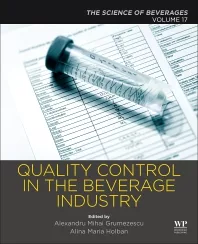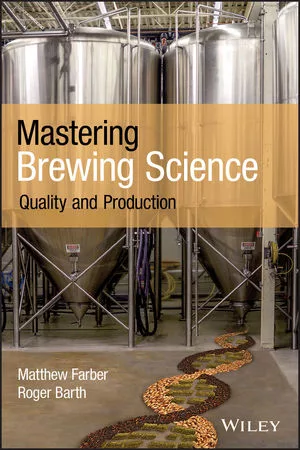X-Café: Serving Consistent Quality in Every Cup
X-Café:
Serving Consistent Quality in Every Cup
By SARAH THEODORE
Americans drink millions
of cups of coffee a year – in fact, coffee is the world’s
second-largest dollar volume commodity after petroleum. But the quality of
coffee, especially through foodservice outlets, can be inconsistent,
especially when manned by busy or inexperienced personnel. X-Café,
based in Princeton, Mass., got into coffee extracts for just that reason
and has built a business on RTD (or ready-to-dispense) coffees that allow
foodservice operators to serve consistent quality in every cup.
The company recently completed an expansion of its
Portland, Maine, production facility that increased its capacity to 10
million pounds of green coffee beans per year, or 3 million 8-ounce cups of
coffee per day. The company produces 30-to-1 liquid coffee extracts in
bag-in-box for the foodservice industry and 1,000-liter totes for
ingredient use.
X-Café President Paul Kalenian says coffee
extracts have existed for several hundred years, but never achieved the
flavor and aroma of fresh-brewed coffee, until now.
“Most [extracts] are made the same way that
instant is made, minus the dehydration step to make a powder or
crystal,” Kalenian says. “We have developed an entirely new
method using 100 percent arabica beans, fresh roasted and perfectly brewed
into a 30-to-1 concentrated liquid, so the coffee has no instant notes
whatsoever – because there is no instant ingredient. And we made it
shelf stable – no need for refrigeration or freezing.”
Kalenian, along with his wife, Cathy, who serves as
vice president of operations, founded X-Café in 2000. He says the
soft drink industry, which created dispensing systems to ensure its
products were served consistently in all locations, provided the model for
X-Café’s business.
“We realized that in 1950 Coca-Cola had
the same problem [that coffee has]. They sold an ingredient, mixed by hand,
on demand by an army of ‘soda jerks’ who were not trained in
consistent product quality,” Kalenian says. “Coke saved
themselves through ‘post-mix equipment’ a.k.a. bag-in-box. We
look to provide consistent quality through professional extraction, and
Bunn (and others) have stepped up to the plate to provide accurate post-mix
equipment for the coffee industry.”
The company patented its extraction process and set up
shop in a 20,000-square-foot facility with a system that was designed to
produce 600 gallons per day from freshly roasted coffee beans. “We
considered it a prototype extraction facility,” Kalenian says.
“We focused on product quality only, not energy efficiency or water
recycling. Very simply, we needed to know if liquid coffee extracts had any
market potential for repeat sales. In the first few years we grew rapidly,
and we found that, in fact, there was an enormous market for perfectly
brewed coffee available on demand for high- and low-volume foodservice
applications.”
Model facility
Having proved the market potential for its products,
the company set its sights on those other issues. The new plant expansion
gives it two independent production lines. Features of the new line include
computer-controlled Diedrich Coffee Roasters; water-cooled coffee grinders
with a capacity of 2,500 pounds per hour; a proprietary coffee extractor
with a reverse-osmosis water purification system; and a fully computerized
control computer to monitor it all. The company also has installed six new
silos, which each hold 60,000 pounds of green coffee beans.
The new line also has been designed with energy
efficiency and environmental concerns in mind, recycling 80 percent of the
water used and recapturing 80 percent of the energy used. Environmentally
conscious systems include the use of wastewater from the plant’s
reverse-osmosis water purification system in a wet scrubber that provides
pollution control for the two new coffee roasters. One hundred percent of
the extracted coffee grind waste is de-watered and recycled through
composting or biomass energy, which the company points out is equal to the
10 million pounds of green coffee it takes in each year. In addition, it says, Central Maine Power has awarded the
company with a grant for its use of energy-efficient motors and VFD motor
controls.
Most of X-Café’s clients include
distributors of foodservice accounts. “[They] utilize our coffee
bag-in-box program for accounts that could not possibly be serviced well by
the typical roast and ground program – such as sports arenas,
casinos, convention centers, healthcare, military, banquet facilities and
cruise ships,” Kalenian says. “When our product is dispensed
through the post-mix dispensers, 500 cups of coffee can be served without
downtime.”
X-Café offers standard products such as 100
percent Arabica Colombian beans at medium and dark roast, in regular and
decaffeinated versions. It also offers flavors such as Hazelnut and French
Vanilla.
But Kalenian says just about any variety of custom
product also can be produced through toll extraction for private label
programs. “Send me your favorite beans or blend, and a ‘roast
to sample’ and we capture the signature flavor and fragrance from
them – this is what makes our company unique,” he says.
“We have been able to serve Sumatra coffee ice cream, Costa Rican
coffee ice cream, and Kenyan coffee ice cream, and coffee experts have been
able to pick out the nation of origin because our method of extraction
brings out the varietal taste characteristics of the green coffee
bean.”
The company’s primary product sizes are
half-gallon and 1-gallon bag-in-box for use in post-mix dispensers.
However, 1,000-liter totes can be used for ingredient use in ice creams,
ready-to-drink beverages, and other drinks.
Future plans for X-Café include an extraction
facility on the West Coast to complement its Portland facility, and
satellite plants outside of the United States. The company is currently
looking into setting up its first international extraction facility, and
has licensed distribution of individually packaged product for one-cup and one-pot service through Portion Pac, a division of HJ
Heinz. BI
Looking for a reprint of this article?
From high-res PDFs to custom plaques, order your copy today!







